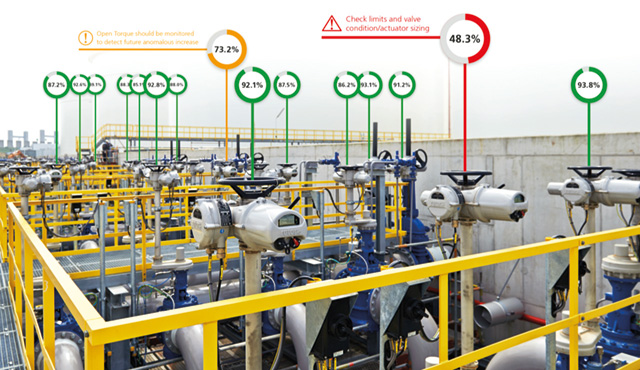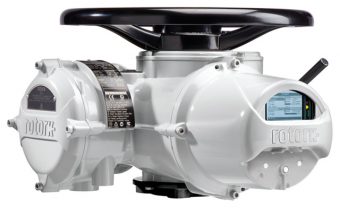
Dave Godfrey, Senior Manager – Lifetime Management at Rotork, says management of obsolescence is an essential part of an effective asset management strategy, and argues that technology allowing backwards compatibility for legacy products is an essential tool for ensuring the high performance of all assets on site.
Flow control is not a new technology and today is found across a variety of industries and applications controlling the flow of liquids and gases. Actuators are the key items of equipment within flow control that have brought automation to an otherwise manual process.
They are found within a huge number of applications across oil and gas, water, power, process and industry. Flow control continues to innovate, allowing operators access to the latest technology – even on sites that have been operating for many years.
Actuators can be electrically, pneumatically, hydraulically or electro-hydraulically powered. The choice of which actuator to use depends on multiple factors, such as location, available power supply, valve type/size, type of fluid being controlled etc.
For example, pneumatic actuators have traditionally been used in applications such as oil and gas, offering critical high-speed failsafe or emergency shutdown (ESD) duties in extreme or hazardous locations.
Some electric actuators are referred to as specialist process control actuators because they provide continuous, modulating control. With a focus on consistency and reliability, they are ideally suited for combustion, food and beverage, water and power applications. Intelligent electric actuators are found in a wide range of applications because of their reliability and efficiency, as well as ease of access to a power supply.
Within oil and gas applications they are favoured because they do not release emissions (as can be the case with pneumatic actuators powered by the produced gas). They are increasingly the actuator of choice for site operators who wish to increase asset uptime because of their ability to capture historical performance data.
The specialist management of all types of actuators to prevent site downtime due to obsolescence concerns can be undertaken with support from actuator manufacturers. Site operators know of the risks associated with ageing assets. The main danger from potential asset obsolescence is the impact on performance and uptime.
If assets are unable to run efficiently- or at all- then the impact on production and profit can be severe. Unplanned downtime caused by asset failure or non-performing assets can lead to poor performance, poor product quality and reduced output yields .
Technological advances now allow for specific obsolescence concerns to be met with upgrade processes. For example, Rotork’s A-range actuator was launched in the 1960s and can still be found operating many decades later.

They are known as ‘SyncroSET’ actuators, with an external reversing contactor starter and local controls. A feature available within the IQ range of intelligent electric actuators, IQ3 SET, means that two situations that appear to be opposed (IQ3 technology with the set-up of an A-range actuator), is possible.
The recent launch of Rotork’s IQ3 SET allows for backwards compatibility to the 1960s (including A-range), updating to the latest actuation technology without affecting existing plant infrastructure. It allows not only for immediate improved performance, but future-proofs the site for the years to come.
As such, it can be considered as a key part of a site’s obsolescence management, replacing legacy actuators with the latest intelligent actuator platform. Use of IQ3 SET ensures budget predictability, improved performance and reduced downtime.
Holistic consideration of the whole life cycle of an asset ensures diminished risk of failure and increases the ability to continue operation: it future-proofs the system, with seamless integration into existing plant architecture and no need to change existing cables or control systems. The very latest in flow control technology is now more accessible to customers than ever.
Flow control technology plays a critical role within the kinds of industries which we all rely on, such as water, power as well as manufacturing. The management of obsolescence concerns is an essential part of an effective asset management strategy, ensuring increased reliability and continued operation.
Technology that allows backwards compatibility for legacy products is an essential tool in supporting the continuing high performance of all assets on site.
www.rotork.com | information@rotork.com |t: +44 (0) 1225 733200

